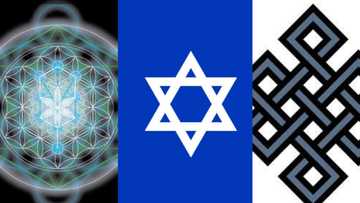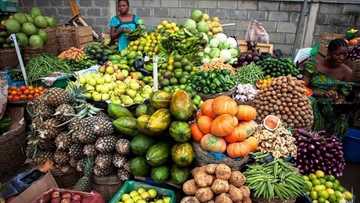Nigerian traditional arts and crafts
Nigerian traditional arts are known all over the world. The people of Nigeria have long developed variety of crafts. They were able to smelt iron and tin, perform the finest artistic work on gold, copper, bronze, wood, make fabrics and leather products.

Virtually all universities in Nigeria have established arts departments that train artists, graphic designers, sculptors, and others. There are numerous exhibition centers and art galleries. Only in Lagos, there are more than 70. The subjects of the ancient art of Nigeria are represented in the expositions and private collections of many museums around the world. But why is it so precious?
Nigerian art history
The origin of the fine arts on the territory of modern Nigeria dates back to the 1st millennium BC. Among the world masterpieces of Nigerian traditional artwork is the sculpture of the Yoruba people. It is an important part of the art of West Africa.
During the archaeological excavations in 1938 on the territory of the ancient state of Ife, a number of terracotta heads and figures of traditional works of art were found. The age of the most ancient discovery is more than 800 years old. There are also world-famous art pieces from the bronze culture of Ife (statues of rulers striking with their naturalism, multi-figured compositions, ritual vessels, etc.) and bronze culture of Benin (portraits of members of the royal family, relief plates with images of people and animals, etc.). The various wooden masks of the Igbo people are very original too.

READ ALSO: How to make Ankara bags?
Architecture of Nigeria
Folk dwellings in different parts of Nigeria differ in architectural form and building materials. In the north of the country, they have a rectangular shape, the walls are adobe, and the roof is flat.
In the southern, south-western and southeastern states, located in the zone of tropical forests, rectangular huts were mostly built. Walls were made with clay or wattle and the people used palm leaves or straw as a material for the roof.
Yoruba and Igbo own their residential and farm buildings along the perimeter of a rectangular courtyard, which is surrounded by galleries of carved wooden pillars. In the central states, houses had ha a round shape. The walls are also erected from clay, and the thatched roof is decorated with patterns and ceramic plates.
A special layer of modern architecture is the construction of mosques. Houses in the cities are built of bricks, reinforced concrete structures, and glass. Business districts of cities are built up with multi-story buildings.

Nigerian art and craft
Important metier in the economy is artisanal handicraft production. The products of this Nigerian craft have long been in great demand not only in rural areas but also in cities. Crafts are based on local raw materials, they are occupied by whole families, villages, residents of urban neighborhoods.
Nigerian textile art ranks first among all the rest. It is especially developed in the south-west and north parts of the country. In the north (the main center of weaving - Kano) weavers-house produces colorful fabrics on self-made machines.
In the southwestern regions inhabited by the Yoruba (weaving centers of Ibadan, Abeokuta, and Iseyin).

A prominent place among the Nigerian handicrafts is the weaving of palm fibers from raffia mats and a variety of straw or cane baskets for storage of cereals and even liquid. The woven products of the cities of Ikot Ekpene, Kano and Bida are especially valued.
Greater craftsmanship was achieved by Nigerians in dressing leather. Craftsmen Kano makes famous red morocco, which is exported.
In the countryside, and in the cities, blacksmiths and chasers for gold and silver are also famous for their art. Gold products of masters Kano in are in great demand among local residents. The pottery of the cities of Ilorin and Ikot Ekpene, glassware of the people of Noupe are highly valued too.
Yoruba, Igbo and other tribes engaged in wood carving. Skillful masters carve masks, statuettes; decorate the carving of doors, chairs, drums, etc.
Some families specialized in the manufacture of vessels made of pumpkin - calabash, which are of different sizes and shapes and have many purposes. Covered with intricate carvings or scorched ornaments, these products often represent genuine works of art.

Fisheries in Nigeria
Fishing is popular in rivers, sea lagoons and in the Gulf of Guinea, as well as in the delta of the river. Chad is a valuable breed of fish. However, fisheries are poorly developed, mainly in Ijaw, Urhobo, Itsekiri.
Over the past decade, fishery cooperatives have been established in some seaside villages. They’ve got boats, nets and other equipment for their own money. A fishing port was built in Lagos. In the northern states, in addition to river and lake fishing, they practice fishing in artificial reservoirs (near the cities of Jos and Kaduna).
In general, during the years of independence, the catch of fish increased 4-5 times, but this is still insufficient to meet the needs of the country. Nigeria is forced to import fresh-frozen fish and other fish products.

In Nigeria, traditional crafts are developed. In ancient Benin, handicraft guilds still make carvings on ivory and wood. There is still the manufacture of iron utensils. Decorated with ornamented leather and embroidered textiles. The city of Kano became known in Western Sudan and the Mediterranean. There is a growing demand for Nigerian art from tourists, including African Americans, as well as local elites.
READ ALSO: Ankara short gown styles 2017-2018
Source: Legit.ng






